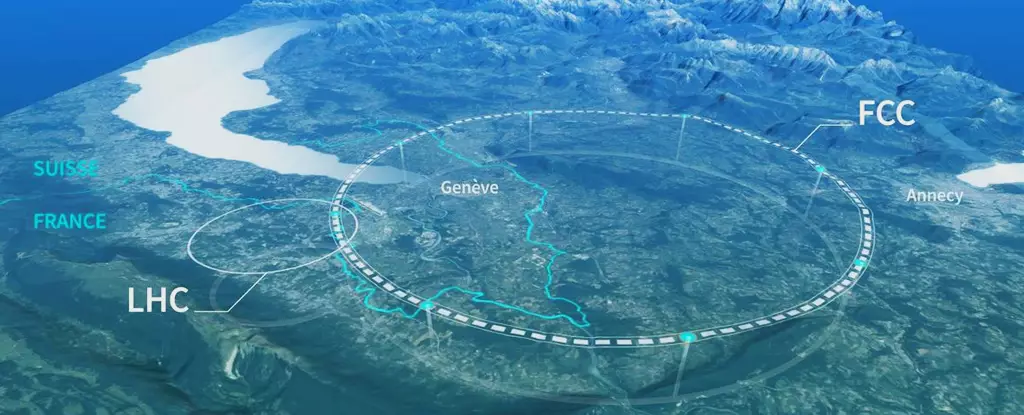Scientific advancements have always been driven by the desire to unravel the mysteries of the universe. Particle colliders have played a key role in this endeavor, allowing scientists to explore the fundamental structure of matter. The Large Hadron Collider (LHC), with its impressive 27-kilometer circumference, revolutionized the field of high-energy physics. However, despite its success in discovering the Higgs Boson, there has been a lack of significant breakthroughs in the pursuit of unifying gravity and quantum physics. As a result, plans are now underway to build a new collider that promises to surpass the capabilities of the LHC.
The Future Circular Collider (FCC) project is an ambitious endeavor that aims to take high-energy research into the next century. This proposed collider will be three times longer than the LHC and will be capable of smashing particles together with significantly more energy. The FCC study envisions a research infrastructure housed within a 100-kilometer underground tunnel, representing a major leap forward in the field of particle physics.
Building a new collider comes with a multitude of challenges. The location of the tunnel must avoid geologically interesting areas, optimize collider efficiency, enable connectivity with the LHC, and minimize social and environmental impacts. To address these challenges, CERN, the European Council for Nuclear Research, is considering various layout options with the aim of minimizing the project’s impact on the surrounding area.
The tunnel, which is expected to be located beneath Haute-Savoie and Ain in France and Geneva in Switzerland, will house two colliders. The first phase, scheduled for inauguration in the mid-2040s, will feature an electron-positron collider (FCC-ee). This collider is expected to provide unparalleled precision measurements and potentially unveil physics beyond the standard model. Following this phase, the proton-proton collider (FCC-hh) will be constructed, surpassing the energy capability of the LHC by a factor of eight.
The potential of the FCC is truly remarkable. With an aim to achieve particle collisions at energies of 100 TeV, the FCC holds the promise of uncovering new realms of physics. However, realizing this goal will require significant technological advancements. To this end, over 150 universities from around the world are actively exploring the options and contributing to the development of the necessary innovations.
The future of particle colliders is filled with excitement and possibilities. The construction of a new collider, such as the Future Circular Collider, represents a major step towards unlocking the mysteries of the universe. With its increased energy capacity and the potential to go beyond the current limitations of the standard model, the FCC holds the key to groundbreaking discoveries in high-energy physics. As scientists continue to push the boundaries of knowledge, the advent of the FCC marks the beginning of a new era of discovery and understanding.


Leave a Reply